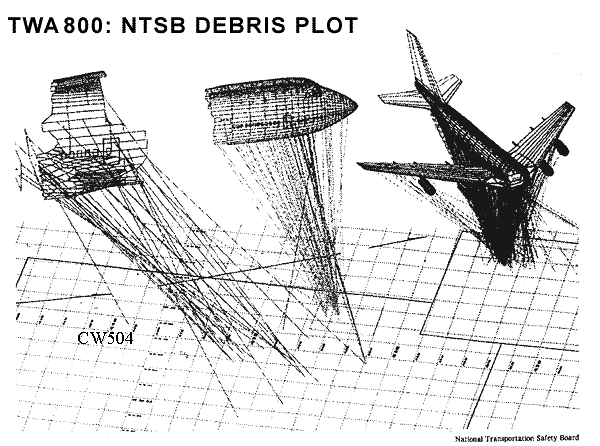To: Swordmaker
I ask once again, because in spite of all your typing, you gave no answer:
In your calculations how did you account for the loss of 80,000 pounds when the nose section separated? How did that affect lift and stall speed?
Since you said you did calculations and supposedly your conclusions are better than those of the NTSB, what was the new stall speed once the 80,000 pound front section separated?
Another big pile of words isn’t sufficient. I want to see a specific number to be convinced.
164 posted on
06/23/2016 5:24:45 PM PDT by
Moonman62
(Make America Great Again!)
To: Moonman62; CodeToad; Doogle; bobby.223; ml/nj; VTenigma; GBA; Lower Deck
In your calculations how did you account for the loss of 80,000 pounds when the nose section separated? How did that affect lift and stall speed? When we were told, by multiple 747 pilots, experts in that field, that within the space of 1 to 2 seconds of the loss of the nose, that aircraft was already in stall, there was no need for knowing the "stall speed" to figure out what was happening to that aircraft: it was still moving at a ground speed of 358 knots, ergo, that was the stall speed of that noseless aircraft in that position. It was falling, just like the one in your video.
There was ZERO lift pushing that plane up. What lift there was, was pulling it over backwards until all partial vacuum on the upper part of the wing was lost. The engines were idle, so there was no thrust to push it upwards with opposite and equal reaction (they could not lift an approximate 500,000 dead weight anyway with only approximately 264,000 pounds of combined thrust even if they were working at 100% full power; they are not rocket engines with huge amounts of thrust, they're not intended to do that.
175 posted on
06/23/2016 5:54:07 PM PDT by
Swordmaker
(This tag line is a Microsoft insult free zone... but if the insults to Mac users continue..)
To: Moonman62
“80,000 pounds when the nose section separated? How did that affect lift and stall speed?”
If you knew anything about flying you’d know that is an ignorant question. Those on this thread that know aviation know exactly what I am talking about.
187 posted on
06/23/2016 6:32:44 PM PDT by
CodeToad
(Islam should be banned and treated as a criminal enterprise!)
To: Moonman62; Swordmaker
Since you said you did calculations and supposedly your conclusions are better than those of the NTSB, what was the new stall speed once the 80,000 pound front section separated?You are missing the point. Actually, several points. The 'middle' section came out first. (The section in RED). It came out sideways at over the speed of sound. (maybe it had side mounted retro rockets, huh?)
Then the Nose continued forward and down. So there was a lot more than the nose that was 'separated' from the rest of the fuselage and wings.
How did that affect lift and stall speed?
Once the wings got to enough of an upward angle (having lost two major sections of the plane just ahead of the wings), there is no such thing as 'lift' or 'stall speed'. The plane, in that circumstance, is just a piece of metal falling out of the air in a simple ballistic arc.


Why did the middle section come out sideways AHEAD of the alleged CWT explosion, then the nose (now unattached to anything) falls in an arc to the ocean, then the rest of the fuselage, wings, and ...oh... THE CENTER WING TANK ?
If the CWT blew up FIRST, why didn't it hit the ocean FIRST ?
213 posted on
06/23/2016 10:23:18 PM PDT by
UCANSEE2
(Lost my tagline on Flight MH370. Sorry for the inconvenience.)
FreeRepublic.com is powered by software copyright 2000-2008 John Robinson
